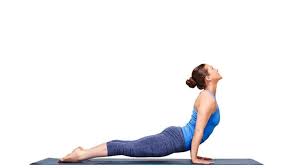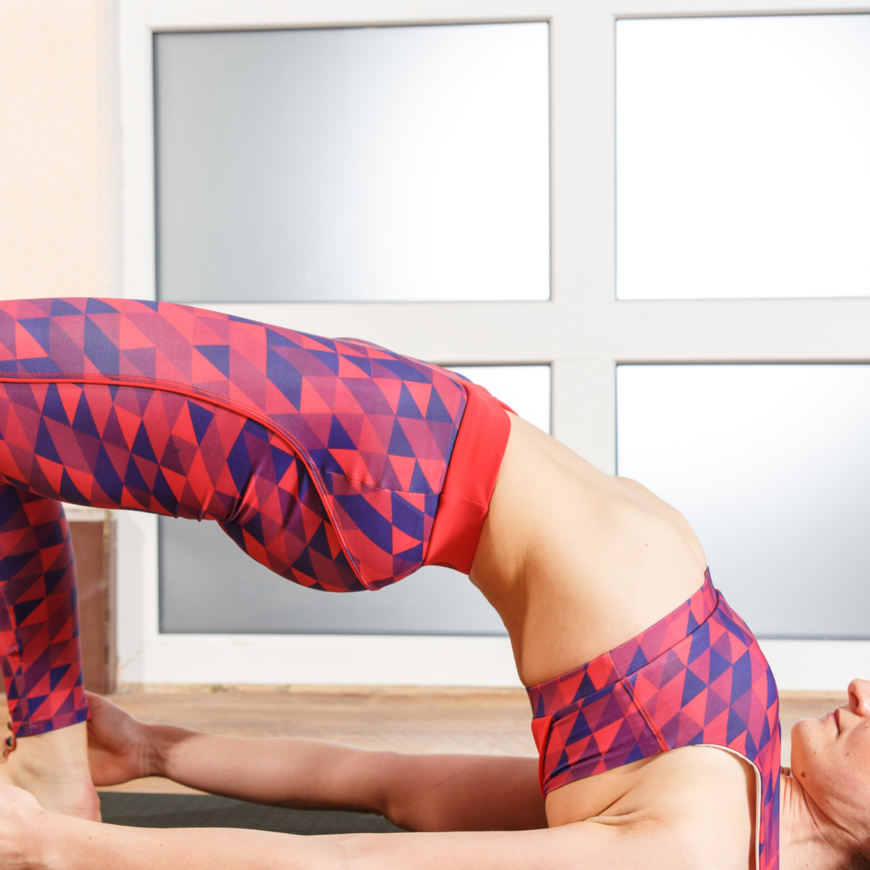Introduction
Utthita Hasta Padangusthasana builds balance, promotes a sense of stability, improves concentration, and is a standing asana. Utthita Hasta Padangusthasana comes from the Sanskrit word, ‘utthita,’ which means stretched, ‘hasta’ means hand, ‘padangustha’ means big toe ‘asana’ means pose.
In English, Utthita Hasta Padangusthasana is also called an extended hand-to –big-toe pose.
How to do Utthita Hasta Padangusthasana?
Start the asana from the mountain pose or tadasana, one is lifted towards the chest, and the other hand grabs the big toe. Then, extending the leg, it is moved out to the side, and another hand is placed on the hip, turning the gaze to the same side.
If you are new to this asana, you can keep the knee bent and use a strap to hold on to the foot or open the hip to the side. You can concentrate your gaze forward until you achieve enough balance to look to the side. To support the raised-leg foot, place it on the top edge of a chair back and adjust the chair an inch or two from a wall and press the heel firmly to the wall.
Step 1: Stand in Mountain pose or Tadasana and bring your left knee towards your belly.
Step 2: Reach for the left foot by the left arm inside the thigh, cross it over the front ankle and hold it with the first two fingers and thumb of the left hand.
Step 3: If your hamstrings are not flexible, hold a strap looped around the left sole. Ensure that you do not tense the neck or shoulder but keep your back straight.
Step 4: On your right hip, place your right hand.
Step 5: As you gradually take the left knee to its full extension, keep the torso long and upright. Make your ankle flexible and push through the toes and ball and take care that you do not hyperextend the knee.
Step 6: Stay in the posture for a few breaths. Root through the balls of the feet and the big toe of the standing leg.
Step 7: Slowly extend the left leg out to the side and keep exhaling.
Step 8: If your balance is right, you can look to the left and breathe smoothly; else, keep the gaze forward.
Step 9: For returning to the first pose, inhale and bring the left leg back to the front and release the grip, exhaling and lowering the foot to the floor.
Step 10: Repeat the same process on the other side of the leg for the same length of time.
Benefits of Utthita Hasta Padangusthasana
The asana improves the sense of mental and physical balance. Utthita Hasta Padangusthasana balances emotions, improves concentration during meditative practices, increases self-awareness, and promotes the mind’s steadiness. For staying connected to the foundation of ease and stability that is always within while deepening the core’s strength and opening the heart, this asana should be practiced regularly.
- Keep body stretched out upwards and sidewards when standing on one leg in Utthita Hasta Padangusthasana. The body’s awareness and the muscles’ contraction and activation help improve the pose, enhancing the body’s balance.
- If your mind does not stays connected to the body, Utthita Hasta Padangusthasana will not support you. The mind’s concentration is powerful with improved awareness and balance, thus bringing stability and calm to the mind and the body.
- The spine extends upwards to main the body’s balance and pulls in the tummy throwing the chest out in the asana. It keeps the hips square, lengthens the spine in the pose, and ensures endurance and stability.
- The asana is considered a pose for recovering injured hamstrings, provided the leg that is raised is well supported. Carry out the posture slowly and carefully to reduce the pain if the hamstrings’ injury is minor. Add Utthita Hasta Padangusthasana in your daily routine for tone and strong legs at the hamstrings, calves, and quadriceps.
- An essential part of any human body is a robust and flexible hip, which acts as the entire body’s center. Take the leg out as it is a challenge in Utthita Hasta Padangusthasana if the hips do not flex enough. The hips gain flexibility slowly with regular practice and make the leg’s movement far easier, helping maintain balance.
- Open up the chest and raise the rib cage flexing the shoulder while keeping the arms are stretched out to hold the raised-legs big toe. Keep the alignment with the ears and arms and maintain the firmness around the shoulders too.
- Utthita Hasta Padangusthasana is a powerful pose where all the joints from the shoulders, wrists, elbows, fingers, knees, hips, toes, and ankles become flexible with regular practice.
- If someone suffers from rheumatism, he/she can get relief with support with the movements of joints. Thus, it is a therapeutic way of providing comfort and healing also.
Conclusion
Utthita Hasta Padangusthasana works with the spleen or sacral (Svadisthana) and root chakras (Muladhara). When these chakras get stimulated, it helps the chakras strengthen a person’s openness to intimacy, stability, sense of self, and creativity.





Add Comment